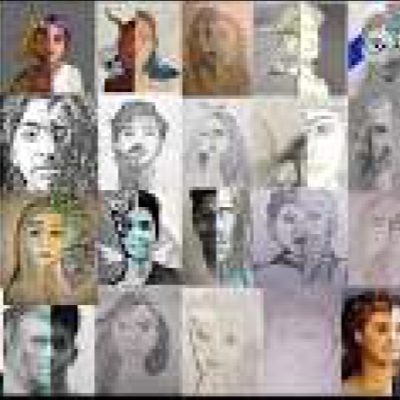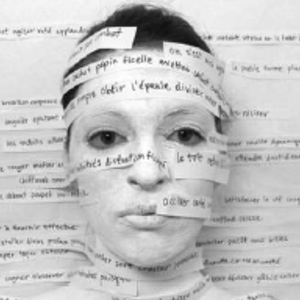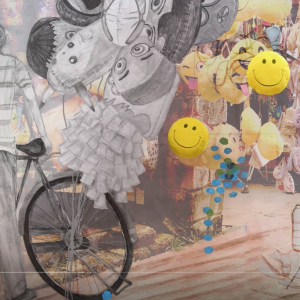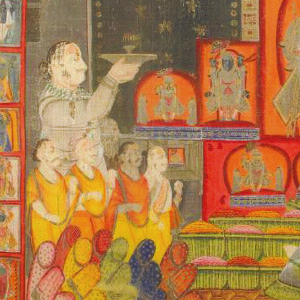Aim & Objectives
“The process of artistic creation and exploration of literary characters can lead to self-discovery”. To develop and understanding of the impact of power structures like colonialization in the early historical period on the characters of the novel “The Tempest” and also explore their own identity while creating their own self-expression around the issue.
Learning Outcomes
Students create a self-portrait, half of which reflects a character of the novel “The Tempest”, and the other half, their own. They also write a critical commentary on the final product focusing on how historical events influence character’s identity, support a character, and justify his/her actions by exploring their own identity while creating their own self-expression around the issue. Students explore their own facial expression, features, emotional response to self-portraits or portraits of any person, characterization, improvisation and with their personal interactions within their respective school and home communities, through creative expression.
Process for the Lesson
Lesson-1 | Introduction Class – Leonardo-da-Vinci’s methods of Facial Proportion, and making the Self Portraiture.
Knowing and understanding
Learning Experiences
* Discuss and analyze chiaroscuro technique in great master works including Rembrandt, Leonardo da Vinci, Raphael, Velazquez, Caravaggio, Vermeer. Courbet, and Durer
* Range of analytical diagrams
* Identify geometric configurations Understanding Formal Analysis including concepts, process and the use of appropriate language
* Cultural significance and the contexts
* Subject specific languages
* Relationship between art form and context
* Range of analytical diagrams
* Identify geometric configurations
Worksheet – Identify geometric configuration in the famous portraiture – Student will choose any one of famous portraiture and develop the diagrams through PPT tools. Worksheet: SEE/THINK/ WONDER
Lesson-2 | Developing Artistic Skills – Human Head Proportions – Anatomy Master Class for figurative artists
Understanding formation of human features and formation of making portraiture
*Human features and formation
* The ratios of face/body, pencil drawing techniques and tonal variation
* Structure of making self-portraits, Characterization, Improvisation, Free expression It will be a limited multiple-choice question and have online discussion with factual question.
Student can refer TEDXED lesson planner: https://ed.ted.com/on/zWpDTnW9
Lesson-3 | Developing Artistic Skills – Understanding of shading values and texturing qualities through ‘Chiaroscuro’ technique
* showing form and texture, effects of light on surfaces.
* development of the artistic skills and techniques
* Colour application and textures
*Human features and formation Students will be practice this activity through the worksheet Materials: Pencil, Ruler, Eraser, Pen, Coloured pencils, Paper Size: A4 size
Lesson-4 | Developing Artistic Skills – Summative Art Project – Stage-1
In the stage -1, students will refer their own half portrait and by using their prior knowledge, they will expand the other half.
* Inspiring artist’s style and key concepts
* Structure of making self-portraits, Characterization, Improvisation, Free expression
Discuss and examine the work of the following artists: Frederick Goodall, Johann Heinrich Ramberg, Joseph Noel Paton, Ferdinand Lured by Ariel, William Hamilton, George Romney, Angelica Kauffman, Charles Buchel are created a unique style to tell their stories through ‘Tempest Novel – Further exploration: https://en.wikipedia.org/wiki/The_Tempest
Apply the style to create a work of art that expresses sensory memories.
Lesson-5 | Developing Artistic Skills – Summative Art Project – Stage -2
Once they completed stage – 1, students will explore their own hidden identity and express their ideas in their own thematic environment. Clear artistic intention
* Explore diverse idea and development
* Find imaginative solutions and other perspectives
* Identify outline connection
Lesson-6 | Responding and Reflection
Students will give and receive meaningful oral feedback from peers and teachers. Students evaluate their final artworks and reflect about overcome challenges in the final reflection worksheet. In order to create an artistic response students inspire the ‘The Tempest characters and reflect their inner identity and relationship in the literature aspect.
Knowing and understanding
Learning Experiences
* Discuss and analyze chiaroscuro technique in great master works including Rembrandt, Leonardo da Vinci, Raphael, Velazquez, Caravaggio, Vermeer. Courbet, and Durer
* Range of analytical diagrams
* Identify geometric configurations Understanding Formal Analysis including concepts, process and the use of appropriate language
* Cultural significance and the contexts
* Subject specific languages
* Relationship between art form and context
* Range of analytical diagrams
* Identify geometric configurations
Worksheet – Identify geometric configuration in the famous portraiture – Student will choose any one of famous portraiture and develop the diagrams through PPT tools. Worksheet: SEE/THINK/ WONDER
Lesson-2 | Developing Artistic Skills – Human Head Proportions – Anatomy Master Class for figurative artists
Understanding formation of human features and formation of making portraiture
*Human features and formation
* The ratios of face/body, pencil drawing techniques and tonal variation
* Structure of making self-portraits, Characterization, Improvisation, Free expression It will be a limited multiple-choice question and have online discussion with factual question.
Student can refer TEDXED lesson planner: https://ed.ted.com/on/zWpDTnW9
Lesson-3 | Developing Artistic Skills – Understanding of shading values and texturing qualities through ‘Chiaroscuro’ technique
* showing form and texture, effects of light on surfaces.
* development of the artistic skills and techniques
* Colour application and textures
*Human features and formation Students will be practice this activity through the worksheet Materials: Pencil, Ruler, Eraser, Pen, Coloured pencils, Paper Size: A4 size
Lesson-4 | Developing Artistic Skills – Summative Art Project – Stage-1
In the stage -1, students will refer their own half portrait and by using their prior knowledge, they will expand the other half.
* Inspiring artist’s style and key concepts
* Structure of making self-portraits, Characterization, Improvisation, Free expression
Discuss and examine the work of the following artists: Frederick Goodall, Johann Heinrich Ramberg, Joseph Noel Paton, Ferdinand Lured by Ariel, William Hamilton, George Romney, Angelica Kauffman, Charles Buchel are created a unique style to tell their stories through ‘Tempest Novel – Further exploration: https://en.wikipedia.org/wiki/The_Tempest
Apply the style to create a work of art that expresses sensory memories.
Lesson-5 | Developing Artistic Skills – Summative Art Project – Stage -2
Once they completed stage – 1, students will explore their own hidden identity and express their ideas in their own thematic environment. Clear artistic intention
* Explore diverse idea and development
* Find imaginative solutions and other perspectives
* Identify outline connection
Lesson-6 | Responding and Reflection
Students will give and receive meaningful oral feedback from peers and teachers. Students evaluate their final artworks and reflect about overcome challenges in the final reflection worksheet. In order to create an artistic response students inspire the ‘The Tempest characters and reflect their inner identity and relationship in the literature aspect.








